Asian swimsuit: features, agricultural technology, breeding

The Asiatic bather is also called the Asiatic light, and the inhabitants of some Siberian regions call this flower “hot”. It is easy to guess that he was named a bathing suit for growing on moist soils of meadows and forest glades. The plant belongs to herbaceous perennials of the Kupalnitsa genus and belongs to the Buttercup family. In the wild, it can be found in many regions of Western Siberia, in the territory of Central and Eastern Siberia, as well as in the expanses of Altai and Mongolia.
The Asian swimsuit grows well both in wet meadows and forest glades, and in highlands. For its beautiful flowers, this plant is barbarously exterminated in its natural growing environment, but nowadays, by purchasing seeds or seedlings in stores, the Asian swimsuit can be successfully grown in garden plots.
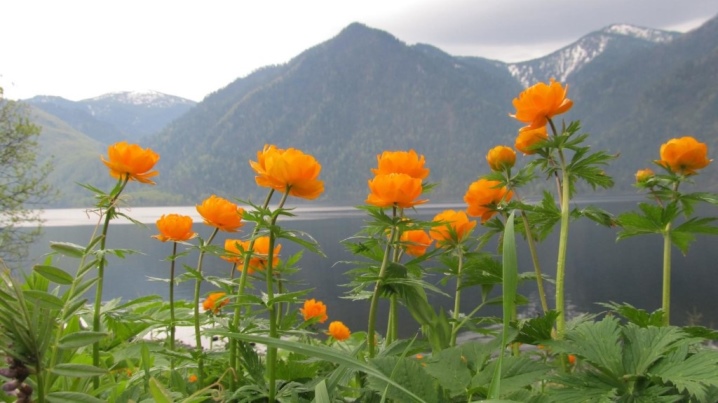
Description
The Asian swimsuit used to be often confused with the Kytmanov swimsuit because of the similar color of the flowers, but they are different biological species. The stem of the Asian leotard is straight and smooth, it can be simple or branched and reach 80 cm in height. The bright green leaves have long petioles and 5-sided outlines. Stem leaves can be from 1 to 5, of which the lower ones are petiolar, and the upper ones are sessile with plates that become smaller upward. The roots consist of a large number of filamentous lobes; the main root is absent.

The flowers of this swimsuit are large, about 5 cm in diameter. Orange-red sepals in the amount of 10-20 pieces. The petals are 2-3 times longer than the stamens, they also have an orange-red color and are widened from the base upwards with a pointed tip at the apex. The flowering time of the Asian swimsuit is May-June, it is pollinated by beetles, flies and bees, has up to 50 peduncles in the bush. Fruits, ripening at the end of June, are leaflets up to 11 mm long, with a short nose, which is bent inward at the base.

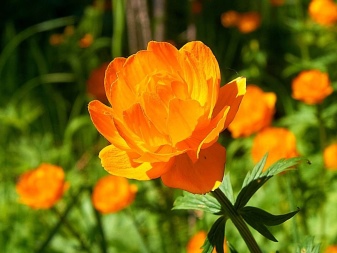
Growing rules
Despite the fact that the Asian swimsuit is an unpretentious plant that is easy to grow on a personal plot, you should carefully read the recommendations of experienced gardeners.
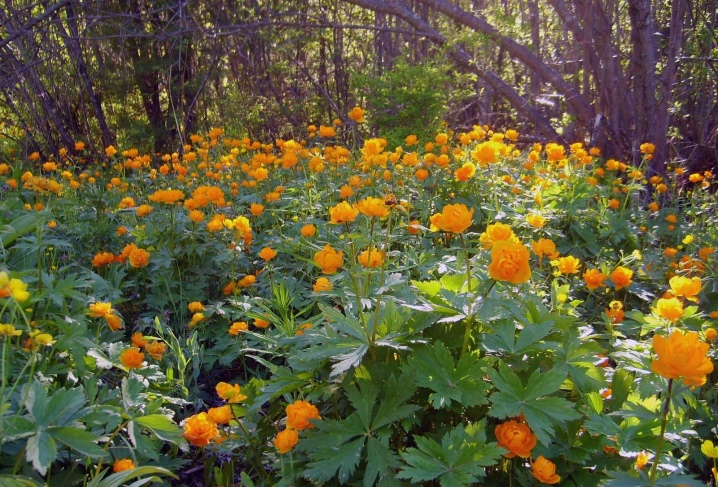
Optimal location
For comfortable growth, this flower needs a sunny place or light partial shade. The soil should be well-drained, as the bather does not like drought. The soil is recommended to be used fertile, loose and sour, with a high humus content, an ideal option is a mixture of peat, leafy earth and sand.
It is recommended to grow an Asian swimsuit in one place for 5-10 years. If several varieties are planted nearby, they can become dusty, and a hybrid with non-varietal qualities will grow.
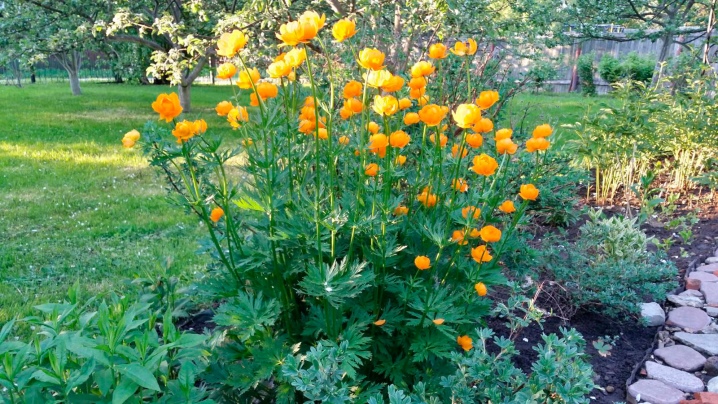
Landing
A swimsuit should be planted or transplanted in spring or autumn. The distance between the planting pits should be approximately 30-40 cm. Plants grown from seedlings are planted together with a lump, the roots of the specimens obtained by division are shaken off, sometimes even washed from the ground.
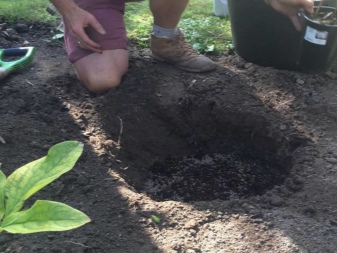
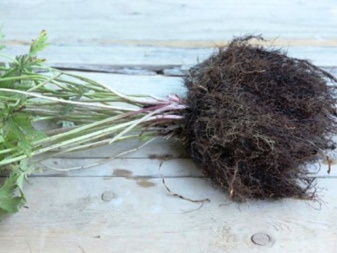
Watering
The Asian swimsuit needs regular watering, especially transplanted young plants need it. Abundant watering is recommended for these flowers in dry season.
For irrigation, it is necessary to use settled warm water heated by the sun. After watering, the soil surface should be loosened and weeds removed. It is very important to avoid stagnant water.
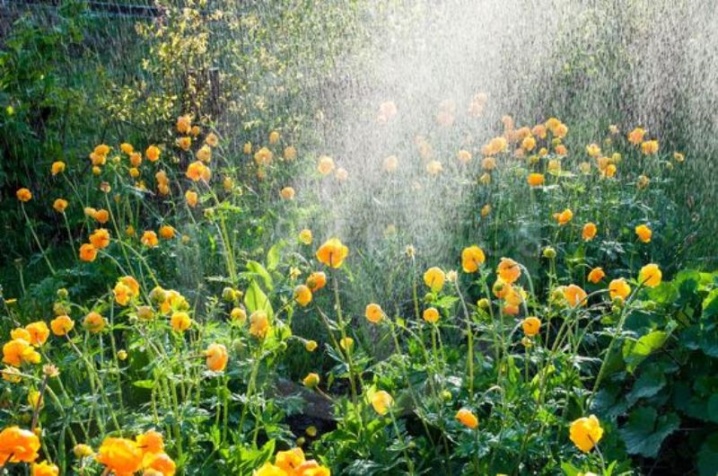
Top dressing
When watering, you can add a urea solution (1 tsp per 10 liters of water). It is recommended to use Agricola or Nitrofoska preparations for feeding. With their help, the swimsuit is fertilized at the time of the opening of the buds and immediately before flowering. Humus and peat fertilizers should be applied in spring and early fall.
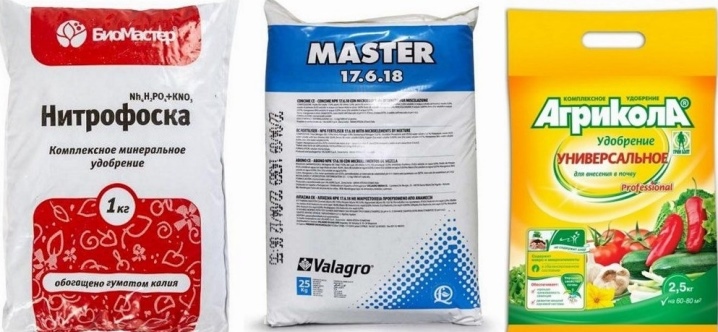
Preparation for wintering
The Asian bather belongs to frost-resistant plants. She does not need special shelter from the cold. But be sure to remove dry leaves before wintering (in October) and leave petioles 3 cm high.
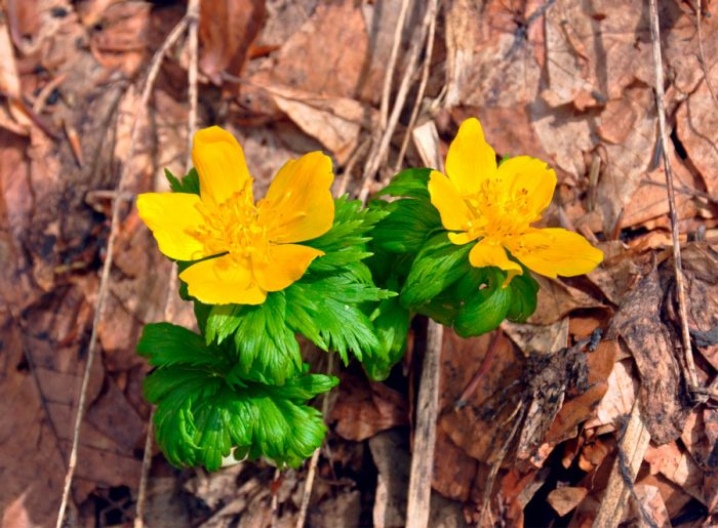
Disease and pest control
This species is resistant to all sorts of diseases of garden plants. Sometimes a swimsuit can be damaged by fungal diseases (smut, septoria) and a root pest such as a penetrating short-bodied nematode. In order to avoid this, it is imperative to remove dry leaves in the fall.
If the plant has suffered greatly from infection, then its remains must be destroyed, and nearby growing bathing suits should be treated with fungicides.
When the flowers begin to bloom, the plant can be sprinkled with Epin, which is an effective immune stimulant.
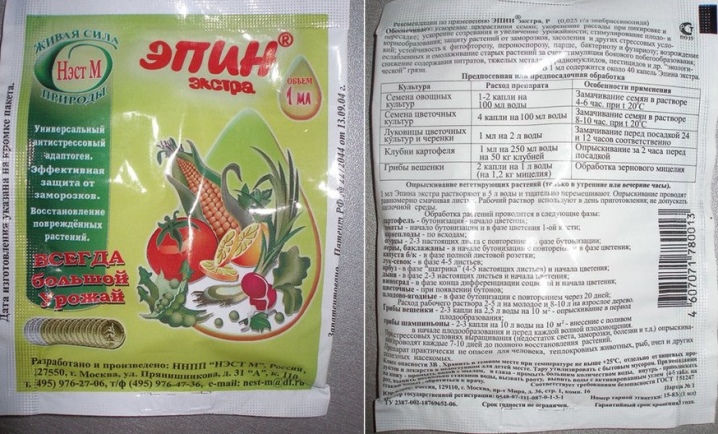
Reproduction methods
There are several breeding options for the orange beauty - the Asian swimsuit.
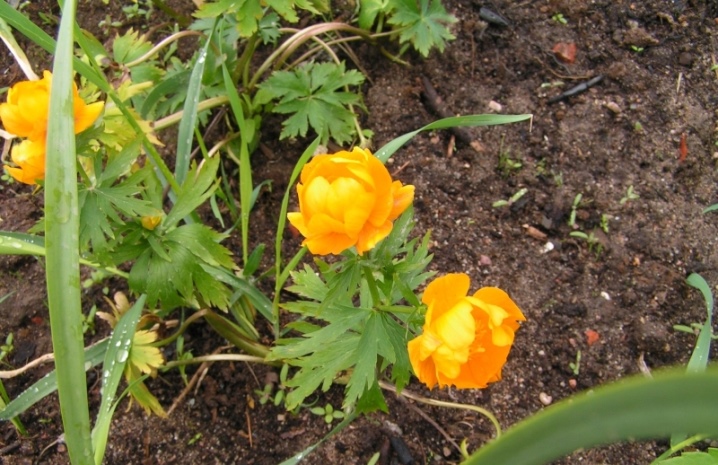
Dividing the bush
An adult plant about 5 years old is recommended to be split in April-May or early autumn. The bush must be dug out, the rhizome must be washed, then with a sharply sharpened clean knife, divide the root into several bushes so that each has 3-4 buds. It is recommended to cut the cut with ash or a weakly concentrated solution of potassium permanganate.
The divided parts must be immediately planted in the soil, deepening the neck of the root by about 2 cm. The swimsuits multiplied in this way bloom in the next season.
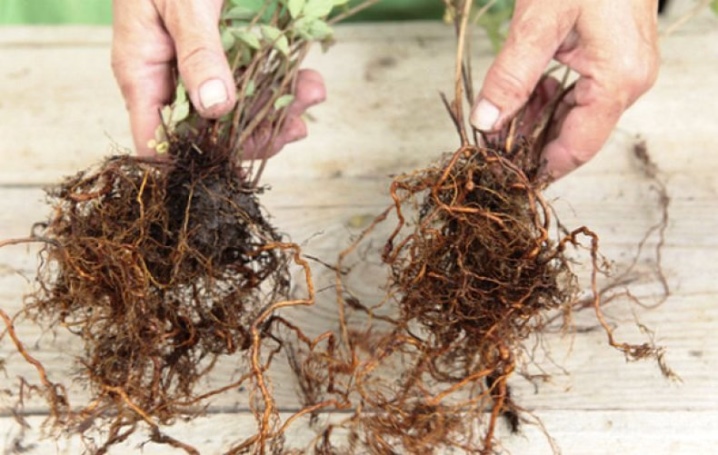
Cuttings
Shoots growing at the base of the bush are suitable for cuttings. After cutting (in May-July), they should be treated with any rooting stimulant. Then it is advisable to root in peat, sand and perlite.
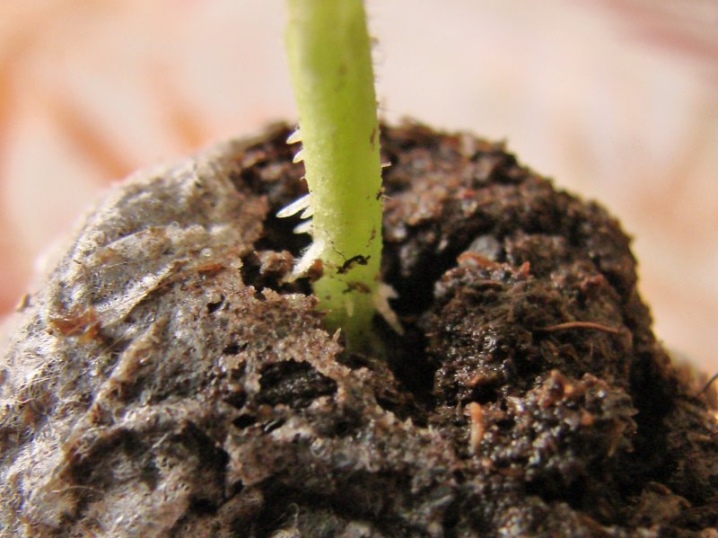
Using seeds
Sowing the seeds of this type of swimsuit is recommended as soon as they are harvested, in August or October. You can sow in the ground or in a box, which must be dug into the ground, pouring a mixture of peat, sand and leafy earth.

The first shoots appear towards the end of May, they must be watered and shaded from direct sunlight. You should dive when a pair of true leaves appears. Plants bloom in 2-3 years.
Use in landscape design
The lush orange flowers of an Asian swimsuit look amazing against a blue sky or pond background. They go well with stones and with small ground cover plants: silvery or field crib, hybrid sedum.
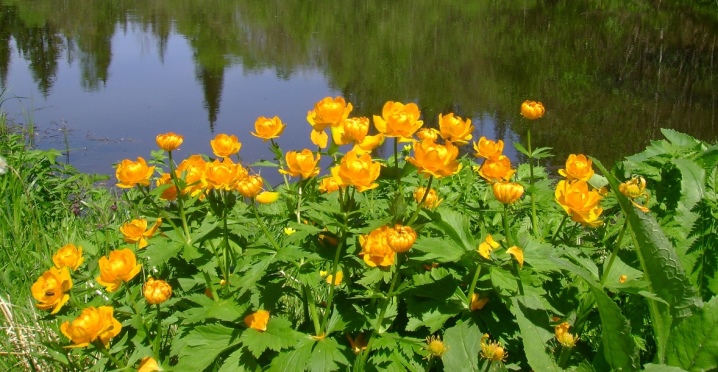
Planted between low and tall perennials, the plants look very decorative. Often, the Asian swimsuit is planted with lilacs, bells, Japanese spirea and holly magnolia. Hosta, daylilies, Siberian iris and badan are also suitable partners for these graceful flowers.
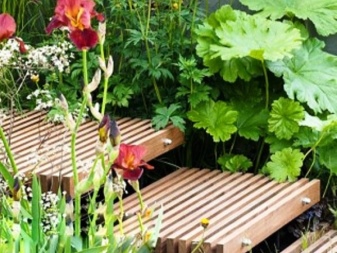

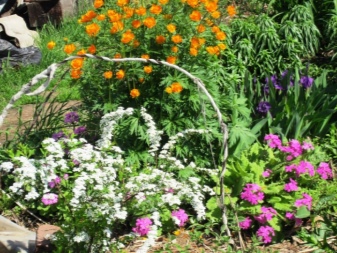
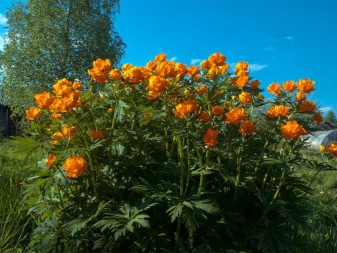
For how an Asian swimsuit looks like, see the next video.







































































































The comment was sent successfully.